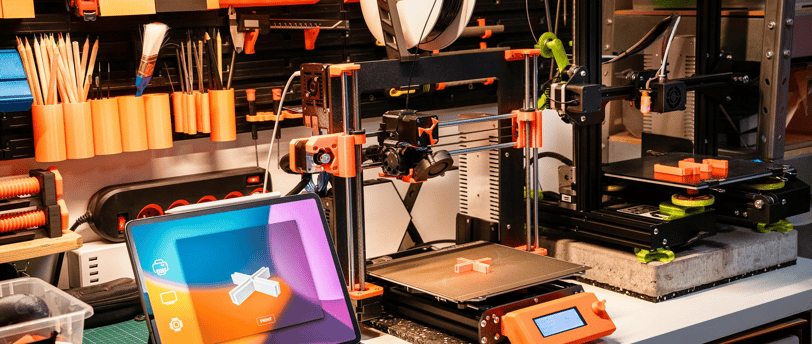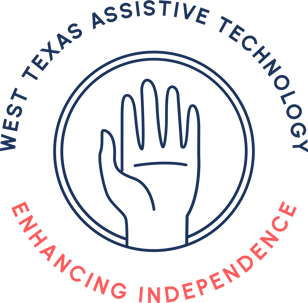Unlocking Possibilities: Resources for 3D-Printed Assistive Technology
Explore how 3D printing transforms assistive technology with affordable, custom solutions. Learn about top resources like e-NABLE and TTAP, empowering independence through innovation.
1/25/20252 min read


Unlocking Possibilities: Resources for 3D-Printed Assistive Technology
Imagine a world where custom assistive devices can be created quickly, affordably, and tailored to individual needs. Thanks to 3D printing technology, that vision is becoming a reality. For individuals with disabilities, access to assistive devices can mean the difference between dependence and independence. Yet traditional assistive technology can often be expensive, difficult to acquire, or not perfectly suited to the user’s needs.
This is where 3D printing steps in, revolutionizing the field by providing innovative solutions that are customizable and accessible. Whether you’re a maker passionate about creating life-changing devices, a healthcare provider exploring new options for your clients, or someone looking for tools to overcome personal challenges, the world of 3D-printed assistive technology offers endless possibilities. Below, we’ll explore some of the top resources available to help you discover, create, and access these transformative devices.
Discovering 3D-Printable Device Catalogs
For those just starting out, online catalogs are a treasure trove of ready-to-print designs for assistive devices. These platforms offer tools that address a variety of needs, from grip aids to mobility supports.
TechOWL’s 3D Printing Catalog: TechOWL offers a wide range of assistive device designs that can be 3D printed. They also guide users to local resources where devices can be printed, such as libraries, schools, or community centers.
Illinois Assistive Technology Program (IATP): IATP shares open-source designs for assistive devices that can be printed and distributed through their network. This program is ideal for those who need functional, straightforward solutions.
Community Initiatives Driving Change
Collaborative efforts play a crucial role in making assistive technology widely accessible. Community programs connect individuals in need with skilled makers who can bring their ideas to life.
Makers Making Change: Makers Making Change matches individuals with disabilities to volunteer makers who create customized assistive devices. Their “Low Tech Assistive Devices Kit” is a perfect starting point for those wanting to explore 3D-printed solutions.
Make:able Challenge: Hosted by PrintLab and Autodesk, the Make:able Challenge encourages participants to design innovative assistive devices using tools like Tinkercad or Fusion 360. This initiative not only fosters creativity but also raises awareness about the possibilities of assistive technology.
Tapping into Open-Source Communities
Open-source platforms are pivotal in sharing designs and fostering collaboration in assistive technology.
e-NABLE: Known for creating the first 3D-printed prosthetic hand, e-NABLE is a global community that shares free, open-source designs for assistive devices. This resource is ideal for those looking to adapt or create highly customized solutions.
State Assistive Technology Programs
Many state-run programs support individuals with disabilities by offering access to 3D-printed assistive technology.
Texas Technology Access Program (TTAP): TTAP leads Texas’s efforts under the federal 21st Century Assistive Technology Act. They provide device loans, demonstration centers, and custom solutions, making assistive technology accessible for Texans of all abilities.
Oklahoma ABLE Tech: This program specializes in 3D-printed assistive devices for education, employment, and daily living. Their platform also allows individuals to request custom-made tools.
WATAP (Washington Assistive Technology Act Program): Residents of Washington State can access WATAP’s 3D-printed assistive devices as a last-resort solution. They offer highly specialized tools designed to meet unique needs.
Non-Profit Organizations Making a Difference
Non-profit organizations have embraced 3D printing to make assistive technology accessible to all.
MakeGood: Based in New Orleans, MakeGood creates affordable, custom assistive devices through 3D printing, helping individuals overcome daily challenges with innovative solutions.
Why 3D Printing Matters in Assistive Technology
The power of 3D printing lies in its ability to provide affordable, personalized solutions that traditional manufacturing methods cannot. By leveraging this technology, we can address the unique needs of individuals with disabilities and remove barriers to independence. These resources not only provide tools but also foster collaboration, connecting people and ideas to create a more inclusive future.


